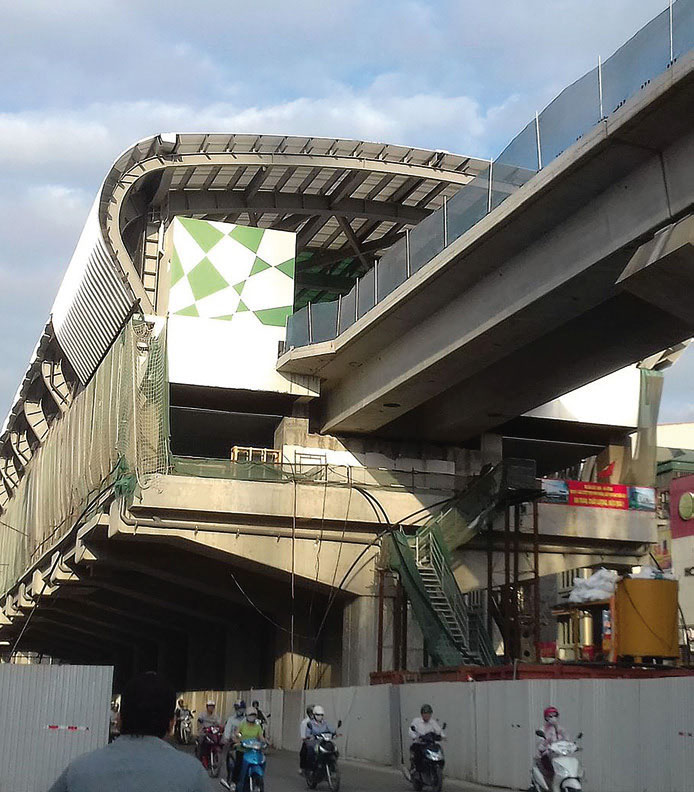The Belt and Road Initiative in Vietnam: challenges and prospects
Vietnam stands to benefit from China’s Belt and Road Initiative (BRI) due to its growing demand for infrastructure investments to fuel the country’s growth. At the moment, Vietnam is facing challenges in meeting this demand because of the decreased inflow of official development assistance following its attainment of the middle-income country status in 2009, difficulties in promoting Public-Private Partnership projects due to tightening financial and legal regulations, and limited state-funded investment due to budgetary constraints. Based on one estimate, Vietnam’s infrastructure needs (in terms of road, rail, airports, ports, telecoms, electricity and water) would reach a staggering US$605 billion from 2016 to 2040. It will need to actively seek different sources of funding including from the BRI.
Vietnam has endorsed the BRI and the China-led Asian Infrastructure Investment Bank but is cautious about the economic, political and strategic implications of this initiative. There remains lingering distrust between the two countries and rising anti-China sentiments in Vietnam due to recent tensions over the South China Sea disputes, especially following the 2014 oil rig crisis. On the one hand, Vietnam has expressed formal support for the BRI as it is Chinese President Xi Jinping’s signature foreign policy initiative. On the other hand, Hanoi seemed more concerned with how this initiative is implemented. While Vietnamese President Tran Dai Quang welcomed the BRI when he attended the Belt and Road Forum in Beijing in May 2017, he also emphasized that cooperation under the initiative must ensure “sustainability, effectiveness and inclusiveness, openness, mutual respect and benefits, and compliance with the UN Charter and international law”.
Although China is keen to fund projects such as steel mills, coal-fired power plants, high speed railways and highways, Vietnam is unlikely to consider getting Chinese loans for these projects as a top priority. Some observers have pointed out that securing Chinese loans is neither cheap nor easy. China also normally imposes conditions on their preferential loans including the use of Chinese technologies, equipment and contractors. Moreover, Vietnam’s experience with the poor record of Chinese contractors and technologies in various projects will dampen its willingness to take on Chinese loans.
Vietnam is open to funding from other sources including loans from international financial institutions and ODA partners especially Japan. In general, Japanese contractors and technologies are perceived by the Vietnamese public as being more trustworthy than Chinese ones. Vietnam is also keen to promote the Public-Private Partnership, especially the Build-Operate-Transfer (BOT) model. Public-Private Partnership projects will continue to be a major avenue for Vietnam to meet its infrastructure needs as they can help relieve the state of financial burden and international obligations.
Given Vietnam’s cautiousness, the implementation of the BRI in Vietnam is likely to be slow. So far, no new infrastructure project in Vietnam has been officially labelled as BRI-funded, although the Cat Linh-Ha Dong metro line in Hanoi, which has been under construction since October 2011, has been categorized as such by both sides. In the coming years, whether the BRI will be successfully implemented in Vietnam will continue to depend on Hanoi’s evolving perception of the initiative. Vietnam may apply for one or two ‘pilot’ projects to get a better assessment of the upsides as well as downsides of BRI loans. However, due to rising public debt, Vietnam may refrain from applying for government-to-government loans. Instead, it may encourage domestic private investors to apply for BRI loans, especially from the Asian Infrastructure Investment Bank, to construct infrastructure projects under the BOT model. This approach will reduce the political and strategic implications of BRI loans for Vietnam.
In sum, the implementation of BRI in Vietnam faces significant challenges. China should acknowledge these challenges and work with its domestic stakeholders and Vietnamese partners to address them. Although the actual implementation of the BRI in Vietnam may be slow, it is most likely that Hanoi will continue to lend diplomatic support to the initiative as a means to strengthen overall relations with China.
Le Hong Hiep, Fellow at ISEAS-Yusof Ishak Institute
This is an extract from Le Hong Hiep’s ‘The Belt and Road Initiative in Vietnam: Challenges and Prospects’, ISEAS Perspective 2018/18; https://www.iseas.edu.sg/articles-commentaries/iseas-perspective
